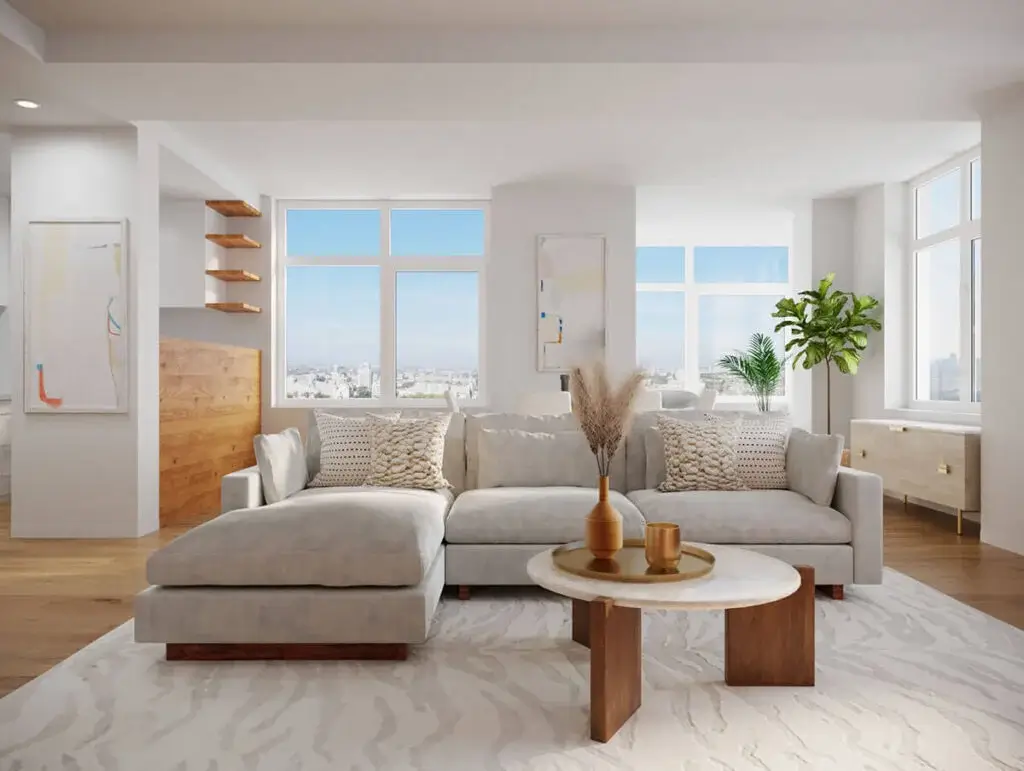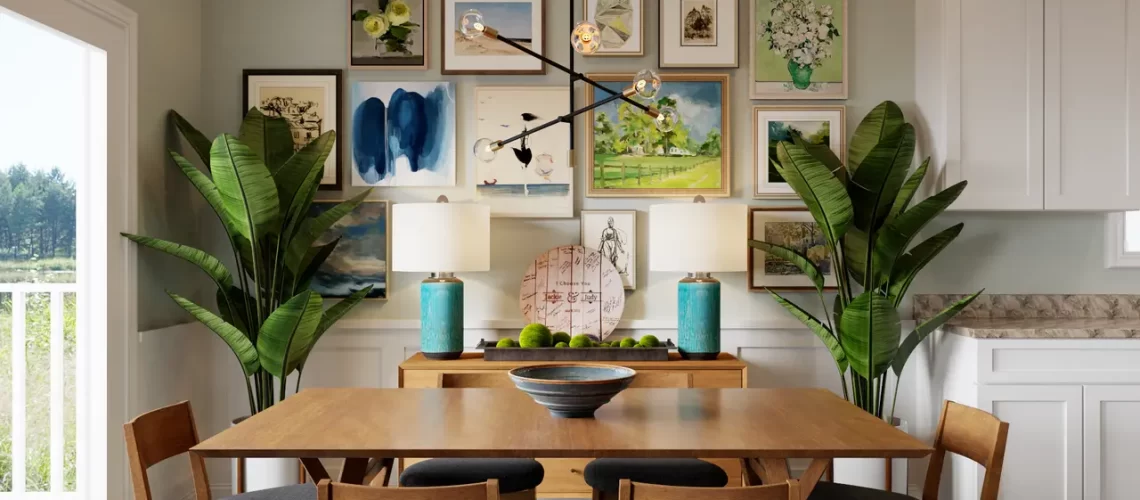Introduction to Innovative Home Ideas
Welcome to the future of home living! When we talk about innovative home ideas, we’re diving into trends that not only change how our spaces look but how we interact with them. Imagine living in a space that adapts to your needs, saves energy, and even takes care of you. These aren’t just dreams; they’re becoming realities. From smart kitchens that help you cook like a pro to bathrooms that can create a spa experience at the touch of a button, innovation is at the heart of these trends. We’re seeing the rise of sustainable materials, technology seamlessly integrated into every corner, and designs that are as good for the planet as they are for our mental well-being. So, buckle up! We’re about to explore how these cutting-edge ideas are shaping the way we live, making our homes smarter, more sustainable, and ready for the future.
The Rise of Smart Home Technology
Smart homes aren’t just a trend; they’re the future. Imagine walking into your house, and with a simple voice command, the lights turn on, your favorite playlist starts to play, and the thermostat adjusts to your perfect temperature. This isn’t a scene from a sci-fi movie; it’s what the rise of smart home technology offers today. From smart thermostats that learn your schedule and adjust the temperature accordingly, to smart locks that you can control from your smartphone, the possibilities are endless. These gadgets not only add convenience but can also help save on energy bills and increase home security. And the best part? You don’t need to be a tech guru to make your home smart. With user-friendly apps and devices, making your home smart is more accessible and affordable than ever. So, whether you’re looking to simplify daily tasks or keep your home at the forefront of technology, embracing the rise of smart home technology is a move towards a more efficient and innovative living space.
Sustainable and Eco-Friendly Design Trends
Going green is not just good for Earth, it’s becoming a big trend in homes too. More and more people want their spaces to not harm the planet. This means using materials that don’t hurt the environment and designs that save energy. For example, furniture made from recycled or reclaimed wood is getting popular. It has a story and doesn’t waste resources. Also, people are choosing paints that don’t have harmful chemicals. This keeps the air inside homes cleaner. Another big thing is solar panels. They use the sun’s power to give homes energy, cutting down on electricity from places that pollute. So, saving the planet can start right at home, with choices that make your space look good and do good.
Maximizing Small Spaces: Creative Solutions
Maximizing small spaces is all about being clever and creative. Here’s the deal: you don’t need a huge house to have a stylish and functional home. Start by using multi-purpose furniture. Think of a sofa that turns into a bed or a table that can expand when you have guests over. Next, focus on storage solutions. Shelves up high can be a game-changer. Don’t ignore the space under your bed or your sofa either – it’s prime real estate for storage boxes. Mirrors? They’re not just for checking your outfit. Placing mirrors strategically can make your space look bigger and brighter. And don’t forget about light and color. Light hues make rooms feel open and airy. Choosing the right lighting can also create the illusion of more space. Remember, it’s not about the size of your space but how you use it.
The Influence of Biophilic Design on Well-Being
Biophilic design isn’t just a trend; it’s a game changer in how we think about our living spaces. It’s all about bringing the outdoors inside, making sure we’re surrounding ourselves with plants, natural light, and materials that remind us of nature. Why? Because studies show it makes us feel better, both mentally and physically.
Imagine stepping into a room filled with sunlight, fresh air, and green plants everywhere. Feels good, right? That’s biophilic design in action. It’s been shown to reduce stress, improve mood, increase productivity, and even enhance creativity. Plus, it connects us more deeply to the natural world, which let’s be honest, is something we could all use a bit more of these days.
Incorporating biophilic elements into your home doesn’t have to be hard or expensive. Start with simple things like increasing natural light by keeping windows clear, adding a few plants to your favorite spaces, or using materials like wood and stone when you can. It’s about creating environments where we not only live but thrive. So, if you’re looking to refresh your space, consider letting a bit of the outside in. Your mind and body will thank you.
Multifunctional Furniture for Modern Living
In today’s homes, space is a luxury. That’s where multifunctional furniture comes into play. These clever pieces are all about making the most of what you have. Think about a sofa that turns into a bed, a table that expands to seat more people, or a desk that can also serve as a dining table. It’s not just about saving space, though. Multifunctional furniture is also about smart living. With more of us working from home, having a piece of furniture that can adapt to our changing needs throughout the day is a game changer. And it’s not just practical. These pieces are designed to look good, blending seamlessly with modern decor. Whether you live in a small apartment or a larger home, incorporating multifunctional furniture can make your space more functional, flexible, and stylish.
The Role of Texture and Color in Future Trends
In the world of future interior design, texture and color stand at the forefront, shaping how we perceive and interact with our living spaces. These elements are not just details; they’re the game changers. Imagine walking into a room where the colors calm your mind, and the textures invite your touch—this is where design is headed. Bold colors are making a comeback, pushing past the era of neutral palettes. We’re talking vibrant blues, deep greens, and rich yellows that add personality and depth to any room. But it’s not a free-for-all; these colors are used thoughtfully to create spaces that are both energizing and comforting.
Texture, on the other hand, is breaking out of the traditional mold. It’s no longer just about how a surface feels; it’s about adding visual weight and dimension. Picture contrasting materials like smooth marble against rough, reclaimed wood. These combinations aren’t just for looks; they stimulate our senses and make spaces more dynamic and engaging.
In essence, the future of interior design lies in how effectively we can use texture and color to transform spaces. It’s about creating an environment that feels personally enriching and deeply connected to our individual tastes and comforts. So, when planning your next home makeover, think about how these elements can work together to not just reflect the now but lead into the future of design.
Integrating Advanced Materials for Durability and Style
The future of interior design is bold and innovative, focusing on both durability and style. One key trend is the integration of advanced materials in home decor. Think beyond traditional wood and metal. We’re talking about high-tech fabrics that resist stains and wear, surfaces that purify the air, and sustainable materials that look good while saving the planet. These materials aren’t just tough; they have style to match every aesthetic, from minimalist to eclectic. Whether it’s a sofa that stays cool to the touch or countertops that fight bacteria, incorporating these materials into your home means less maintenance and more time enjoying your space. This blend of technology and design is not just about making homes look good; it’s about making them smarter and more sustainable for the future.
Personalization and Customization: Making Your Space Yours
Making your space truly yours isn’t just about picking out furniture or choosing paint colors anymore. It’s about personalization and customization. This trend is all about tailoring spaces to fit not just your aesthetic but your lifestyle needs as well. Imagine walking into a room that knows you — lighting adjusts automatically to your mood, furniture rearranges itself based on your activity, and art pieces change to reflect your current interests. Sounds futuristic, right? But it’s where interior design is heading. More than ever, homes are becoming extensions of the individuals who live in them, mirroring personalities down to the minutest details. From custom-built shelving that showcases your collections in the most flattering light to smart systems that learn your habits and adjust your home environment accordingly, the options are endless. This approach means no two homes will be the same; your home becomes as unique as you are. Customizable furniture that morphs to suit different purposes, programmable wall panels that alter a room’s look and feel with the tap of an app, and kitchens that adapt to accommodate your cooking style are just the tip of the iceberg. So, think beyond the traditional. Your space isn’t just somewhere you live; it’s a canvas for your individuality. Dive into personalization and customization; make your home truly a reflection of you.
Summary: The Future of Interior Design with Innovative Home Ideas
The future of interior design is exciting and packed with innovative home ideas that promise to revolutionize how we live. From smart homes that manage themselves to sustainable materials that help the planet, the trends shaping the future are both dynamic and thoughtful. Imagine walking into a house that not only looks good but also adapts to your needs. Furniture isn’t just furniture anymore; it’s smart too, with pieces that transform with a touch of a button, catering to both your comfort and space needs. Lighting systems now respond to your mood or the time of day, creating the perfect ambiance without you lifting a finger. And let’s not forget about sustainability, a theme that runs strongly through future trends. Materials are being chosen not only for their looks but for their longevity and environmentally friendly features. The focus is on reducing waste and promoting a healthier living environment. So, get ready to see homes that are more connected, more flexible, and more in tune with the environment. These innovations aren’t just changes; they’re improvements that promise a better way of living.



